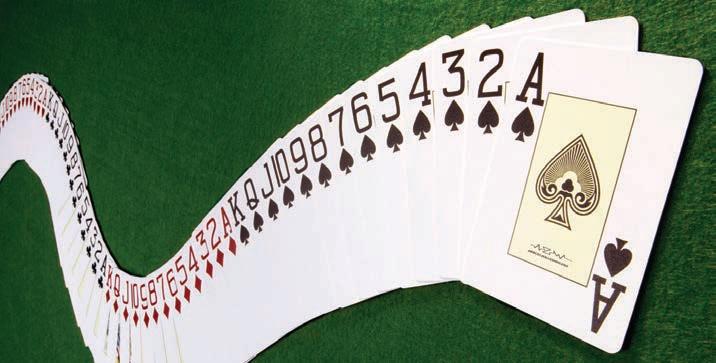
19 minute read
Nonni Hits the Dispensary” by Karen Shiebler
By Karen Shiebler
Back in the olden days, when I was young and we called it grass, I rarely indulged in recreational marijuana.
Advertisement
But times have changed, and Nonni has joined the growing list of aging potheads.
Thanks to a few conflicting but minor ailments, I am now a fibromyalgia patient who can’t take any over-the-counter pain medications. Nor can I drink alcohol (hello there, aging liver!). I am trying to cut down on the medication that helps me to manage the fibromyalgia discomfort, which means that at the moment the only part of me that

doesn’t hurt is my right earlobe.
Enter the magical joy of the Medical Marijuana Card. Ta-da! Safe and happy pain relief (I hope).
For the past few years I’ve been the lucky beneficiary of weed guidance from my kids. My sons and sonin-law have helped me to find relief from insomnia by providing me with cannabis-infused butter. They’ve introduced me to the new version of smoked weed, which smells like a dead skunk, burns like a forest fire, and can make you melt into your sofa cushions like hot wax.
Not exactly perfect for this old lady.
Anyway, the other day I had a

telehealth visit with a lovely young (as in, probably a sixth grader) nurse practitioner. I didn’t even need any medical records. I just self-reported all of my ouchie booboos, and presto! She certified me! (No, not that kind of “certified,” although many have told me that I am definitely certifiable.)
She approved me for a Massachusetts Medical Marijuana Card, good for one year.
I then spent about an hour maneuvering the state’s website and paperwork, and printed out my temporary card. Easy peasy lemon squeezy.
Off to the local dispensary I went. Well, holy confusion. Luckily for me, the kind, patient young people behind the counter were more than willing to explain things to their gray-haired, befuddled patient/customer. They barely even snickered.
The young man who was helping me explained the differences between the strains of weed. Did I want to be energized and given pain relief? “Yes, please.” OK. Sativa it is. But he warned me that in some people it can increase anxiety. “No, please.” OK, then Indica it is. But that would make me sleepy and sedated.
Eventually he advised a hybrid.
But then we had to talk about THC to CBD ratio. Pain relief and antiinflammatory versus pain relief and high. Or something like that. And don’t forget, there are many other cannabinoids that are helpful for other issues, like inflammation and appetite suppression. We looked at charts. We looked at graphs. We looked at printouts and glossy images. He talked. I bit my lip behind my mask and hoped my eyes looked intelligent.
Eventually, he seemed to feel like he knew exactly the right potion for granny here and jotted down a few notes. All was good. I had pretty much stayed with him so far, and was feeling fairly hip.
Until he started to talk about terpines.
Which sound to me like some type of fire accelerant but are actually related to smell (I think?) and to various types of high but also (maybe) have different health effects. Anyway, we had to consider our terpine preferences.
By now I was just nodding and sweating. There was a line of people waiting outside, six feet apart from each other, but looking a little surly. I just wanted to get my goodies and go home.
But my young and enthusiastic pharmacy major friend wasn’t done yet. Now I had to think about how to take my weed. I could choose lozenges, infused edibles, gummies, sublingual drops, topical rubs, roll on oil, vape, flower or something that was either wax or oil. Oh, and there was even a choice of various “sauces.”
Now I don’t know about you, but when I go to the doctor for a backache, I just want him to write something down on paper and send me to the pharmacy. I do not want to have to decide on my dosage, my route of ingestion or the flavor of the drug.
My little brain was awhirl. I did NOT want to look stupid. I was NOT ready for the teenagers to laugh at me.
Now don’t get me wrong, there were other “mature” people in the place, but most of them looked like they had been using weed every single day since Woodstock. Some of them were apparently using it to help cut down on their meth use.
I kept nodding my head, and saying, “Sure, whatever you recommend.” I kept trying to repeat, “Just make the ouchie booboos go away.”
Finally I thought I was ready to order. I wanted a topical cream, some sublingual drops and one vape for sleep. I pulled out the vape I’ve been using, and told the young man that when I had gotten a new cartridge recently, it just wasn’t staying in the device. Something was wrong.
The 13-year-old working beside him looked at me over her flowered mask. She frowned. “You did remember to unscrew the magnet from the old cartridge and put it on the new one, didn’t you?”
The room filled with giggles and chortles as my face turned purple. I looked around at the experts, several of whom already appeared high, and shrugged my shoulders.
Now the laughs were real, and kind and good-natured. “Welcome, Nonni,” my young man barista said. “Here’s your product.”
Thanks to a “first-time customer” offer, Nonni went home with two vape cartridges, lozenges, sublingual tincture, cream, and ointment. As of right now, everything still hurts.
I just don’t care as much. Karen Shiebler



By Jackie Kellum
Preparing for a vet appoint
ment. There are two types of visits: planned and unplanned. Obviously, one is less complex than the other, because of your ability to plan ahead of time.
The planned visit involves making an appointment, taking your pet, either in a crate or on a leash, and bringing the animal’s health booklet or necessary papers with you. If this is a first visit, bring whatever adoption paperwork or information about the pet regarding how or where you got it. This will help your veterinarian get to know your pet’s medical history, and if they have had vaccinations or not. If your pet is on any medications, bring those medications with you


to the visit. And if your pet has any allergies or any type of sensitivities, inform the vet. For all vet visits, be prepared and write down questions you might have prior to the visit and bring the paper with you.
Remember that in addition to well checks, sick animals also come into the vet office. So it is advisable to keep your pet away from other pets, in a crate or on a leash, as you do not know why that other animal is there, or it might have something contagious. Also, some animals may feel threatened when approached, and may act accordingly.
The unplanned visit usually occurs when your pet is sick. Be prepared. You will be asked a lot of questions. Your vet will have to act like a detective, as the pet cannot express in words how he is feeling. You will have to provide information to the vet to help figure out what the problem is. To help do this, you can write down your pet’s symptoms and things that you have observed. This may include: new or not normal behavior for your pet, differences in appetite, urination, defecation, vomiting/diarrhea, energy level, a new limp, body chewing, signs of pain, an injury/accident/attack by another animal, etc. Every piece of information will be helpful to the vet to find the cause of the problem.
While the vet is examining your pet, pay attention to what is happening and what is being said. If you do not understand a word or what is going on, ask questions until you have a clear understanding of your pet’s situation. Hint: if you cannot explain to another person what is going on with your pet, then you do not understand the situation.
After your pet visit, if it was a planned visit (annual checkup or vaccination), find out when the pet is due back for a follow-up visit, and make a note of this date. If it was an unplanned visit due to illness or injury, have a clear understanding of what is wrong, that is, what is the diagnosis? Specific questions should be asked, including: What caused the condition? How this affects your pet’s general health? What medications are to be taken and the purpose of medicine, any side effects, and any dietary changes to be made? etc. Be sure you know the name of any drugs that the veterinarian prescribed, as well as the dosage, frequency and duration of the medication. Help yourself by researching to learn about this new condition. As with human health for yourself, even when you like and trust your doctor and his care, you still may want to seek a second opinion. Having this concept is not a challenge to your doctor, but may put your mind at rest about what is wrong with you or your pet and prescribed treatment, AND it is smart medicine for all concerned.
Jackie Kellum






By Ken Masson
This hand caused headaches for at least one pair when played at the Lake Chapala Duplicate Bridge Club in
Riberas. South, holding a powerful 2 suiter, started the bidding with his six-card diamond suit. North replied with 1 heart and South now bid 2 spades. Most players consider a jump shift of this nature to be 100% forcing to game but North wasn’t on the same wavelength and passed.


As a result, the partnership played in a part-score while cold for slam, not an outcome you would want to repeat too often!
How did this disaster happen? It all goes back to some misguided information the partners received in their early days of learning bridge. Most bridge teachers correctly stress the importance of finding major suit fits but some, in my view, neglect to stress the need for common sense in describing one’s hand. North was of the impression that since her partner didn’t open 1 spade he must have fewer than 5 cards in the suit so she couldn’t understand his introducing the suit at the 2 level.
The South hand is so strong that there should be a play for some game if North can manage to scrape up a response. To my mind the auction should have gone as in the diagram above.
Some players may feel that the South hand is so powerful that it should be opened 2 clubs but I disagree – big 6/5 hands are notoriously difficult to describe after this opening.
When North responds 1 heart, 2 spades by South says that the partnership must play at least in game somewhere (unless they double the opponents for penalties).
North can now temporize with 2 no trump (or 2 hearts if a bit squeamish about not having a full club stopper!) When South next bids 3 spades, his distribution becomes much clearer: a 5 card spade suit with longer diamonds and at least game-going values. North now has a simple raise to 4 spades.
But South is not finished yet - he has loftier aspirations in mind. His 5 club bid shows first round control in the club suit and says, in effect: partner, my hand is really terrific, take another look at yours and see if you feel slam may be on. Holding the heart ace, spade king and diamond queen, North should have no hesitation in jumping to the small slam in spades.
The play in six spades is easy: win whatever is led, draw two rounds of trumps and watch that each opponent follows both times. When they do, just keeping cashing winners and let East take his good trump at any time.
Admittedly, hands of this nature do not show up all that often but when they do it is a good idea for both partners to bid in harmony so I suggest you discuss this deal with your partners.
If the South hand in question had small cards instead of the diamond ace and the club king, then I would have opened 1 spade and continued as though my distribution was 5 spades and 5 diamonds.
Questions or comments: email: masson.ken@gmail. com
Ken Masson





A Knock In The Night
My husband was out of town, and I was
home alone. Our narrow street, more a lane, was private, meaning the few homeowners were responsible for its maintenance, and retaining the historical integrity of the neighborhood. There were no modern amenities on the street, such as street lights or utility poles. At night the dark was so intense that one couldn’t see to walk even

steps without risk of falling.
I was doing some tidying up, around 8:30 p.m., when there was a knock at my front door, with the heavy brass lion’s head knocker, so large it could have worked on a castle. Very loud.
I froze. I expected no one. The porch light wasn’t on, so I couldn’t see who was there. Dare I question who was calling? Should I pretend no one was home? If it was a thief, the person might break in, and here I was by myself, defenseless.
The knock became more insistent, three hard, hollow raps. I opted to call out, “Who is it?”
“Dorothy,” a female responded. I didn’t remember a Dorothy, wondered if this was a trap. Perhaps she had male backup, and this was a ruse.
“Dorothy, Bob the carpenter’s girlfriend,” she clarified.
Oh, now I remembered! We had our eaves replaced a long while back. Why on earth would she be here, and at night no less? I took a chance and opened the door to her lone, slight frame. She was about fifty, and harmless looking. I invited her in, and quickly locked the door and turned on my hall light.
She began to speak in intense, soft tones. “I hope it’s not a problem that I’m interrupting you. I’ve been wanting to come and talk to you for a while. The news is sad. Bob died a few weeks back.”
I invited her to sit and I turned on a lamp. Her face was blank, frozen in a state I couldn’t begin to understand.
I told her how sorry I was that he was no longer with us. He was such a character.
She went on to tell me how important our historic home job had been to him. They would drive by some days so he could remind her how proud he was of doing the work on a home on the historic register.
“His family barred me from the private funeral,” she shared. “They erased me. As though he and I hadn’t shared seven years of life. I think it was because of his first wife.” This tidbit was the brick of her conversation.
I gave her a hug. What a mean thing to do to someone who had obviously loved this man. I thanked her profusely for coming by personally to deliver the news and told her I’d share it with my husband when he returned. She left as swiftly as she had arrived.
I sat and recalled Bob. He was about seventy, always cheerful, efficient and had a meticulous work ethic. Once, at the end of a long day, I asked him about himself. “I have a lovely young lady friend, Dorothy, and we go out dancing. We love to dance!”
I asked what kind of dancing they liked. I pictured something sedate, a waltz perhaps. “We do country dancing, but we really like to dance the Irish jig.” Wow, what energy he had!
When I told him that Michael Flatley’s “Riverdance” show was coming to Houston, he became animated. “I would love to take my Dorothy to that show! I’ll get tickets.”
The next time I saw him I asked if he had the tickets yet.
That night I convinced my husband to buy the tickets and give them to Bob with his next payment, in gratitude for his fine work.
Later he eagerly explained that he and Dorothy arrived three hours early to see the performance. He said it was one of the most exciting things they had ever done.
Now I appreciate the huge significance of some of the small things in life, a gesture of thanks, knowing a person’s passion, answering that scary, unexpected knock in the inky night. Katina Pontikes


—Progressive Freedom

By Rob Mohr
“To undertake a journey on a road never before traveled requires character and courage: character because the choice is not obvious; courage because the road will be lonely at first.” —Henry Kissinger
Kissinger, with forward vision, was reflecting on the state of
the world in better times. The game he played was four dimensional, each move inspired by spiritual undercurrents which shaped a Progressive World Order, and he was the master player. Yet today, many playing the world game are looking backward and blind to what lies ahead.
In recent history, the European Union with twenty-seven member countries has won economic and social gold. While China, and the East Asia coalition, and Brazil’s South American coalition, have emerged as aggressive future champions. Disastrously, America’s blindness has caused her ejection from the game. Focused on military power, tariffs, internal economic strength, and cultural prejudices, the United States has remained blind to the importance of regional and world unity.
If the United States, Canada, and Mexico were in a regional economic and social union, they collectively would be a leading economic player in the world today. Mexico, currently the sixth fastest growing economy in the world, would have been a powerful ally for both the U.S. and Canada. Estimates show that the combined GNP (gross national product) of the three countries would be 25% to 50% higher than the sum of their current individual GNP. Their union would have eliminated border issues, excessive waste of money maintaining separation, and encouraged amnesty. Because of America’s lack of foresight, economists and political insiders, like Michael Cox, believe that within thirty years America’s international role will be significantly diminished.
Multidimensional Freedom, unleashed by the progressive world order, uniquely addressed hard truths. Intuitive, spiritual insight focused on free trade, democratic systems, international cooperation, and effective multinational institutions, remains an ideal that has recently been abandoned in favor of me-first nationalism, autocratic systems, and the breakdown of multinational institutions that undermine cooperative freedom and the stability gained over the previous forty years.
Today the U.S., China, and the Arab Middle East are aggressively vying for control of the world. Other player nations, including Japan, South Korea, and India, have been damaged by the sudden halt in the free market caused by trade wars instigated by the current U.S. government. As a result, the world is once again forced into conflict zones, with infighting between nations creating real danger for the planet.
“We will have a world order whether you like it or not. The only question is whether that government will be achieved by conquest or consent.” —Paul Warburg
Simon Bolivar’s dream of a Gran Colombia, which included all of South and Central America, President Wilson’s vision for one World Order for lasting peace, and George H. W. Bush’s and Ronald Regan’s use of Progressive World Order to achieve peace with the Russians, all confirm the crucial need for a democratic structure focused on free trade and international cooperation.
A Progressive World Order remains the way forward for a full and healthy life for the world’s humanity and the environment. The dream, the spiritual energy required, must come from each of us. With the advent of robots and artificial intelligence (AI), human work in any traditional sense is rapidly disappearing. The economic support for human life will be generated by AI and robots who guide and staff production, trade, medicine, and administration.
This new world-interconnected economy will support health care for all people, quality housing, paid vacations, child care, lifelong free education, and guaranteed income for a healthy fulfilling life. Our creative and spiritual energies will be unleashed in every area of human endeavor. Once again our lives will be balanced between the physical and spiritual. The cosmos will open up and offer humanity gifts that we as yet cannot imagine. The portal into a secure future is open, if humanity chooses to enter. Rob Mohr













